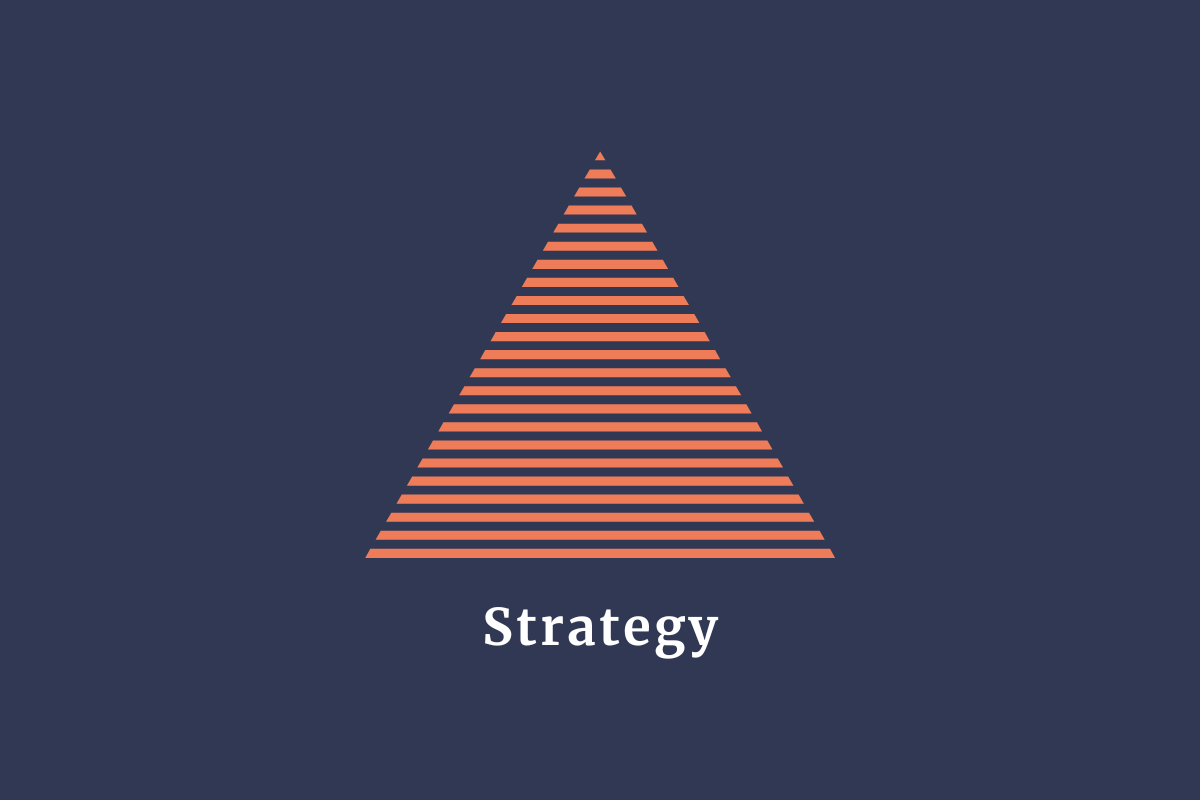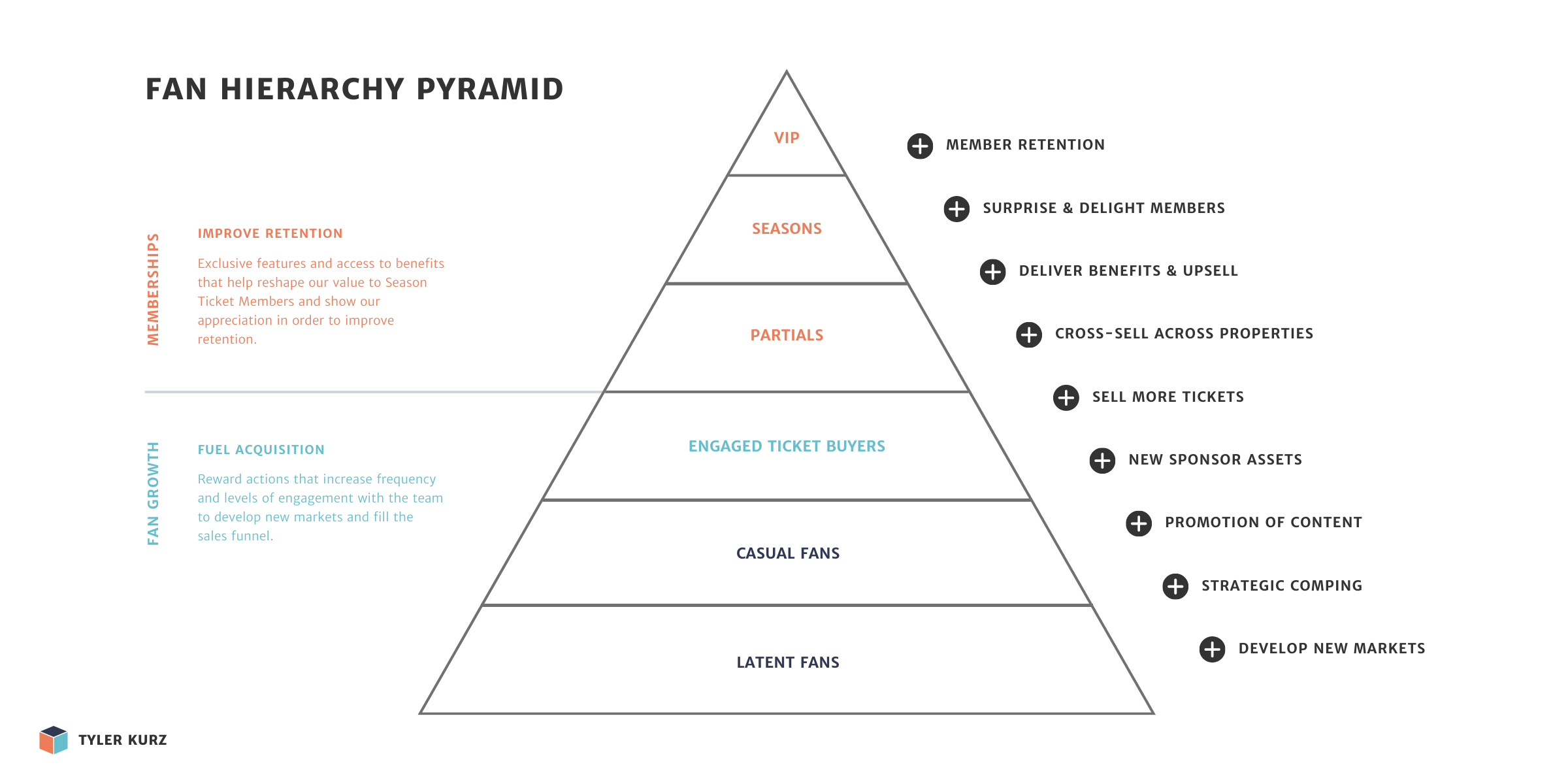The Fan Hierarchy Pyramid

In the sports industry, you are constantly balancing finding ways to deepen a fan's connection with your team, while creating a profitable business model that rewards both sides of the team-fan relationship. Every team's goal is to build a fan base that is not only deeply connected to your team, but also provides a steady stream of revenue through ticket sales, merchandise, sponsorship, and content. How can you turn casual fans into loyal, paying customers? And once you have them, how do you keep them coming back for more? To help answer these questions, I sketched out a Fan Hierarchy Pyramid, a strategic framework that helps illustrate the different levels of fan engagement and commitment, and provides a roadmap for how to move individuals up the pyramid over time and spend more.

At the base of the pyramid are latent fans. These are individuals who may be new to the sport, or who have not yet developed a strong connection with your team. These are new residents in your city, youth, and non-sports fans. To engage these latent fans, you should consider strategies such as community outreach programs, educational initiatives, or targeted marketing campaigns that introduce them to the sport and build their knowledge and appreciation of your team. My organization held a Filipino Heritage Night to celebrate the large and growing Filipino community who have traditionally not been engaged in the sport of hockey and our team.
As you move up the pyramid, the next layer are casual fans. These are the fans who follow your team, but who have not yet made the commitment to purchase tickets. There can be several segments within this group of fans. They may follow the team on social media, catch the odd game via broadcast, or participate in online contests. To convert these casual fans into paying customers, you might consider strategies such as special ticket offers, social media campaigns, or experiential marketing events that give them a taste of what it's like to attend a game and be a part of your team's community.
Single-game buyers are an important group for most teams. These are fans who have shown a willingness to spend money on your team, and you want to encourage them to take that next step and become ticket package purchasers. To do this, you might consider strategies such as ticket discounts, playoff priority, or loyalty programs and fan clubs that reward their commitment and give them a reason to come back for more.
At the top of the pyramid are your season ticket members, who make the largest financial commitment to your team. These are the fans that you want to focus on retaining, as they are the most committed and financially invested in your organization. To keep these fans engaged and loyal, you might consider strategies such as access to exclusive content, VIP events, or personalized experiences that make them feel like they are a part of the team.
My organization uses the Fan Hierarchy Pyramid as a tool for guiding our strategic efforts to engage and retain fans. So far, it's helped inform our marketing and sales playbook and technology investments. By focusing on acquisition at the bottom of the pyramid and retention at the top, we can create a sustainable business model that builds a strong emotional connection between our fans and team. Fans can flow fluidly between each layer of the pyramid, so we need to be fluid in how we speak and engage with them. We need to constantly think about new and creative ways to move fans up the pyramid and to reward their commitment with a host of benefits and experiences that will keep them coming back for more.

